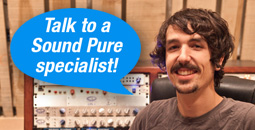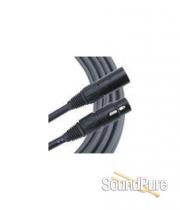Stereo Link and Precise Control Range
It all started with Bob Katz’s idea of tweaking his own xfilter. So Ruben surely took this pretty serious and spend some time for tweaking components on the circuit board until he and of course Bob were 100% convinced with the overall sound by checking serval recordings in our elysia Class-A Lounge – Studio in Nettetal, Germany.
Now the result: The xfilter Mastering Edition is a very sophisticated, handcrafted analog stereo 4-band equalizer, with both channels linked for stereo operation. All four bands provide a precise control range of +/-5dB.
This fine Stereo Mastering EQ produces the high-end sound of a Class A equalizer at an amazing value for the money. He produces an absolutely precise stereo image based on the use of computer-selected components with extremely low tolerances.
5 reasons why you should use the xfilter Mastering Edition:
- Build Quality
- The xfilter Mastering Edition, just like all our products, is designed, engineered and handcrafted in Germany.
- Class-A Topology
- Consequently represents the art of discrete signal processing.
- True Stereo Link
- As one of the few exceptions in the market, the xfilter processes both of its channels with just one set of controllers – a true stereo linked EQ.
- Control Range
- The xfilter Mastering Edition offers a precise control range of all four bands of +/-5dB.
- Output
- Equipped with a balanced output stage with up to +27dBu for Mastering purposes.
Build Quality
The xfilter Mastering Edition is all about details.
Every single of its many aspects – sound, features, circuitry, components, design, materials, manufacturing – has been thought over and over until there was just nothing left to improve. Basically, every single part of our fine products is custom, and most of these are made according to our own designs and specs.
Only the best components the market has to offer are good enough for the xfilter Mastering Edition, and it shows. Each of our product is manually built to order and tested by ourselves, here at our headquarters in Germany.
Our product benefits sum up in an audio quality that is beyond all doubt. Even when extreme settings are used, the sound always stays clean and powerful.
The Hard Facts
A special feature of this analog equalizer shines through its double flexibility! It offers high and low shelf bands which can be switched to high and low pass filters with resonance control.
Two bell filters with narrow and wide Q for the mid frequencies as well as additional passive LC stages with shielded coils to refine the treble frequencies.
True Stereo Operation
Using an analog EQ on a stereo buss can be quite tricky, as only very few units offer the possibility to link their two mono channels for true stereo processing.
As a result, the user needs to fiddle around with many knobs in order to cope with the tedious task of matching the settings for both channels as good as possible. The problem gets only worse when the controllers do not have any steps for reference.
But while there are so many compressors in the market that can be linked for stereo operation, why are there almost no EQs which can do this, too? One of the main answers is component tolerances. Obviously, you want the two linked channels to behave exactly the same, but the natural tolerances that especially potentiometers and capacitors have counteract this ideal characteristic.
To make a long story short: The xfilter Mastering Edition solves this problem by using computer-selected dual and quad layer pots as well as special low tolerance caps.
Resonance High and Low Pass Filter
The outer bands of the xfilter Mastering Edition show a great amount of flexibility. In their standard mode, they are set up as sweet sounding high and low shelf filters that can be used to tailor the airiness and fundamentals of your tracks fast and efficiently.
As a special feature, you can independently switch these to become high and low cut filters with 12 dB per octave and an additional resonance peak at the knee frequency. This allows some very interesting and useful filter curves.
Especially bass frequencies can benefit from a low cut with resonance by obtaining a clean and punchy character. But the resonance can also be used to stretch signals in the bass range, because the resonance filter causes a longer post-oscillation time.
In the high frequency range, you can use the resonance filter to put an accent on a selected frequency without boosting the complete HF spectrum at the same time, which can prevent harshness or an unwanted shift of the overall perception towards the treble.
Switchable Filter Quality
The filter quality of the two parametric mid bands can be switched between two characteristics: Wide (Q 0.5) and narrow (Q 1.0), based on the proportional Q principle.
When designing a parametric filter, you have quite a range to choose from when it comes to the Q factor. After extensive listening, we decided to implement a choice of 0.5 or 1.0 in the xfilter, as these parameters always result in what this machine is focused on: Very musical processing.
You will notice that very narrow Q factors are not offered here. These days, most engineers we know of use digital filters for notching narrow ranges to get rid of problematic frequencies anyway. And this is for a good reason, as it works extremely well.
Additional Passive High-Band
Mmm… The incredible magic a passive EQ can add on top of everything. We all love it, we all need it!
Well, here is the good news: In addition to its four flexible active bands, the xfilter Mastering Edition features a switchable fixed LC filter for polishing the high frequency range. The filter mainly consists of a capacitor and a coil per channel, but unlike the standard shelving designs, it has a slight resonance peak at 12 kHz and starts to fall of at 17 kHz.
This way, the saturation-like storage effect of the coil focuses on the area around the peak without pushing the complete high frequency spectrum too much. The inductors used in the xfilter Mastering Edition have their own shields to reduce outer influences like hum – without these shields, the coils would pretty much act like antennas for all kinds of unwanted noises.
Now you know what the ‘Passive Massage’ is all about: Opening up the top end of your signals by pushing just a single button!
Stepped Controllers
The xfilter Mastering Edition features stepped potentiometers for all its parameters throughout. The 41 steps make a precise recall very easy, and they provide a useful range of possible settings at the same time. And you will just love the feel of them, too.
Stepped controllers are something you will usually only find on much more expensive gear, special mastering editions, or in most of the cases – not at all. The xfilter establishes this very handy feature in the regular serial version without any luxury up-charge.
Computer-Selected Potentiometers
In a linked stereo EQ, the potentiometers need a lot of layers. The pots for setting the mixers (gain) have two layers each, while the pots for setting the frequencies even have a total of four layers each!
The problem occurs that every single layer has its own component tolerance, and while layer A could be at the absolute minimum of the allowed tolerance, layer B could be at the absolute maximum. As a result, the filter stages of the left and right channels would not behave the same.
To solve this, every single potentiometer in the xfilter Mastering Edition is measured and selected with an Audio Precision rig and computer routines written exactly for this task. As a result, only 65% of the dual layer pots and only 50% of the quad pots we buy go into production – the rest is put aside.
It’s a true custom shop option we are proud to offer with every xfilter Mastering Edition free of any up-charges.
Special Low Tolerance Capacitors
If you look under the hood of an audio equalizer, it is very likely that you will find a lesser or greater number of film capacitors. These caps use an insulating plastic film as the dielectric, which is drawn in a special process to an extremely thin thickness.
There are several technical reasons why film caps are a good choice for audio filter circuits, and generations of audio engineers will confirm that they sound great, too.
A typical representative of this component is the MKS film type, which is a great sounding cap to be found in many EQ designs. However, many MKS types come with a typical tolerance of 10%, which can have a negative influence on the channel accuracy of a stereo linked EQ.
For this reason, the xfilter Mastering Edition uses a special FKS type film capacitor which sounds just like a good cap should, coming with a maximum tolerance of 5% only. One more step towards a more accurate stereo image.
Ground Layer Shield
The PCBs of the xfilter Mastering Edition have a total of four layers: Two of them are used for the audio circuitry, one is for power supplying traces, and the last one is a dedicated ground shield layer. But what’s the idea behind this?
The filter networks of the individual bands of the EQ become higher in resistance the lower their specific frequency is set. This makes them more vulnerable towards hum which is caused by electric fields.
As the additional ground layer is placed extremely close beneath the traces which carry audio, it is very efficient as a shield against unwanted noise interferences.
Discrete Class-A Topology
We love the sound of class-A circuitry! And here is why: In a class-A amplifier, the transistors are conductive all of the time, so there is no crossover distortion at all. This is the perfect technological basis for an open sound with massive punch and no degradation of your original source.
The discrete approach makes it possible to design every single stage in signal processing exactly to what you want it to do – physics becomes the only limit. The xfilter uses our custom discrete input and output stages derived from the alpha compressor. The mixing stages are also discrete designs running in class-A mode.
The actual filter stages (band pass etc.) use integrated op-amps instead, and also in this regard we did not go for an off-the-shelf solution. Instead of cheap industrial standard op-amps, the xfilter Mastering Edition uses high grade Burr-Brown OPA series amps which have been designed especially for the critical discerns of pristine audio circuitry.
And there it is – the expensive sound of boutique high end EQs in an affordable package.


















